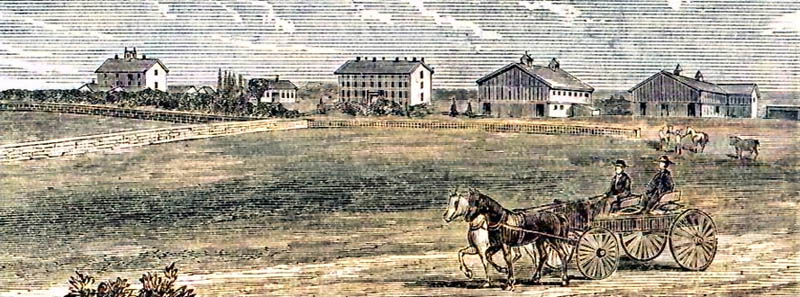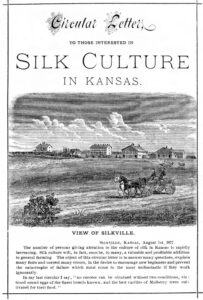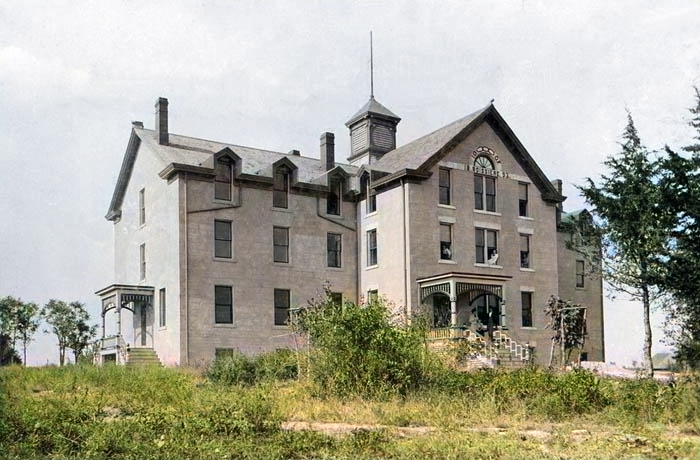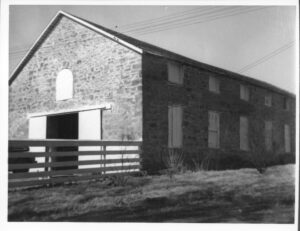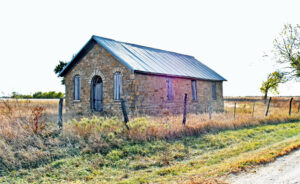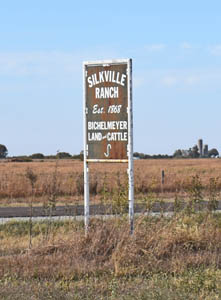Silkville, Kansas, established in 1870 in Franklin County, was a collection of private buildings owned by Frenchman Ernest de Boissiere, whose farm consisted of 3,600 acres under the management of Charles Sears.
Ernest de Boissière was born to an ancient French aristocratic family. He grew up believing in the utopian socialist philosophy of Charles Fourier, which put him in danger with Napoleon III, who came into power in 1851 and named himself emperor of the Second French Empire. Before long, Boissière was forced into exile and moved to the United States, where he first settled in New Orleans, Louisiana.
Later, De Boissiere left New Orleans to collaborate with Charles Sears, Albert Brisbane, and E.P. Grant. These gentlemen had a common bond with Fourier’s form of socialism and sought to put the ideas into motion. In 1867, De Boissiere began traveling throughout the Mississippi Valley, searching for a location for his new community.
In early 1869, the men purchased 3,156 acres of land from the Kansas Educational Association of the Methodist Episcopal Church about two and a half miles southwest of Williamsburg, Kansas. Silkville’s purchase price was around $11,450 or about $3 an acre. De Boissiere then went to France to persuade 40 families to come and live in his town.
He then returned and began establishing a silk-farming settlement. When the 40 French emigrants settled at the colony, each paid $100 to be a part of the commune. Wages were based on what each settler could produce.
After importing silkworms from France, De Boissiere planted 8,000 mulberry trees in 1870, which provided a food source for the silkworms. They also planted 2,000 peach trees, 1,000 grape vines, and 900 other trees in his orchard.
The first building was a large three-story stone dwelling known as the “chateau” was built that had 60 rooms that could house 100 men and women who worked on the ranch. The building was also home to a vast library filled with 2,500 books. For a time, it was the largest manor in the state.
There was also a sizeable three-story frame cheese and butter factory, a one-story stone cocoonery where the silkworms were raised, a similar building for a blacksmith shop and stable, an icehouse, a school, a winery, a church, and barns. The school attempted to teach contemporary world literature to educate the colony’s children.
His first silk worms were produced from California eggs, and in 1870 he began weaving silk ribbons, his looms having a capacity of 224 yards a day. The following year he began weaving silk cloth.
In 1872 the first cocoons were made. Afterward, growing cocoons continued more as an experimental and pioneer business than a profitable enterprise. The growing of cocoons was successful, and Kansas’s brisk, dry, pure air was adapted to raising healthy worms. It was demonstrated that the quality of the silk made in Kansas was equal to that of the best Italian silk, which commanded the highest prices.
Over the years, many members left. Learning that for $100, they could have bought their own land.
In 1876, Boissière’s silk was lauded at the Centennial Exposition in Philadelphia, Pennsylvania. However, Silkville struggled to make money, mainly because it competed with comparatively cheaper fabrics imported from Asia and because Boissière refused to use cost-effective American dyes. Though he sold his product at high prices, he said: “There seems to be a good business in it for the commission man, but not for me.”
Boissière shifted production towards butter, cheese, and livestock raising to compensate. While this kept the settlement afloat for a few years, Silkville eventually collapsed, and its members dispersed. Boissière returned to France in 1892, dying two years later, and his property was given to the Independent Order of Odd Fellows for use as an orphanage. Financial reasons compelled the Order to give up the property, and after a lengthy court battle, it passed into the hands of lawyers from Topeka. In 1916, a fire hollowed out the “Chateau.”
Today, little remains of Silkville and only three stone structures survive: the settlement’s schoolhouse and two barns.
Silkville was located approximately two miles southwest of Williamsburg at the U.S. 50 highway and Arkansas Road intersection.
©Kathy Alexander/Legends of Kansas, July 2023.
Also See:
Extinct Towns of Franklin County
Sources:
Angermayer, Lauren; Silkville, Franklin County, Lost Kansas Communities, Chapman Center for Rural Studies, Spring 2015.
Blackmar, Frank W.; Kansas: A Cyclopedia of State History, Vol I; Standard Publishing Company, Chicago, IL 1912.
Cutler, William G; History of Kansas; A. T. Andreas, Chicago, IL, 1883.
Wikipedia

